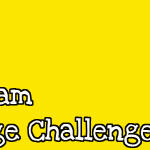Language exchange is always a welcome addition to any language learning routine. Not sure where to get started? Here’s my tips for language exchange.

Finding Language Exchange
There’s lots of options for finding language exchange partners nowadays. The annoying thing is there’s not one “best of the bunch” or one size fits all option out there really.
So I’m going to give you lots of ideas. Buckle up.
Here’s my tips for language exchange first steps – finding an exchange partner.
Take a look at the ones that intrigue you most and pick and choose a small number of options to try. You don’t need to try everything here.
TIP 1: SOCIAL MEDIA
There’s so many potential places to find language exchange partners on social media that you might not even need to check any of the next options. You ready? Here’s some ideas for where to find language exchange partners on social media…
Check relevant hashtags and see if there’s anyone there to connect with.
Join in Instagram challenges like #languagediarychallenge.
Join Groups for learners – there’s even some out there designed specifically for finding language exchange partners.
If you’re quite advanced, join Groups for natives about things that interest you.
Check relevant hashtags and see if there’s anyone there to connect with.
If there’s any happening, try joining a Twitter chat to connect and reach out to people after.
READ MORE: Why Social Media is the Best Free Language Learning Tool
TIP 2: APPS + FORUMS
If social media isn’t working or isn’t an option for you, try apps and other forums and spaces designed for this purpose. Here’s some options for where to start…
Check the Community tab, click “Find Language Partners” and start reaching out.
Try the other Community features such as Notebook, Answers and Discussions and see if anyone responds often, consider reaching out.
HelloTalk, Tandem, Bilingua, Amikumu
These apps are designed specifically for language exchange and connection. Generally helpful for short-term chats rather than “committed” language exchange.
Again, don’t feel overwhelmed here. Pick one or two that work for you and that’ll be easier to keep track of.
READ MORE: All The Indigenous and Endangered Language Learning Apps You Need
TIP 3: EVENTS – ON AND OFFLINE
One of my longest lasting language exchanges came from Women In Language!
By joining in with events created for language learners both on and offline, you’ll be meeting people who love what you love. Here’s some ideas of events…
Online
I’m not sure of any other permanent online events for language learners at the time of writing. Update me if you know of any!
Offline
Polyglot Conference, Polyglot Gathering, LangFest, local language meetups.
These events are always a lot of fun anyway, so you won’t want to head there simply expecting language exchange. You’ll come away much more inspired!
Don’t literally walk up to people like “Be my language exchange partner?!” But I don’t need to tell you that. If you find yourself forming a bond, it’s always worth asking.
READ MORE: Presenting Women In Language: A Brand New Online Language Event!
Doing Language Exchange
Once you’ve found people, it’s up to the two of you to make the most of this new arrangement! Here’s some tips for language exchange once you’re ready to go.
TIP 4: YOU GET WHAT YOU GIVE
If you have more time to spare than money, then a language exchange is another great option for connection. Why do I say that?
Well, generally, time with a tutor would be paid for and time with a language exchange partner is free. However, you are expected to give as much as you receive in terms of time.
For example, let’s say you’re learning Spanish and are meeting a native Spanish speaker who’s learning English. You meet for an hour and chat in Spanish for 30 minutes before switching to English for 30 minutes. You’re giving 30 minutes of your time for 30 minutes of their time.
This means that you need to be going into language exchange prepared to give your support, time and help in return.
READ MORE: How to Get the Most from Your Online Language Lessons with a Tutor
TIP 5: SHAKE ON IT, BUT IT’S NOT A CONTRACT
To make the most of language exchange, be sure to lay out the expectations beforehand.
Decide between you where you’ll meet, how often, how long you’ll speak each language before switching, when you’ll meet.
Much like with what we as students expect from lessons with teachers, expectations from language exchange differ.
Some people will be going into a language exchange expecting something really casual. Meanwhile, others will want a full, packed session with contact in between and stuff prepared to share. They’re both right. But they’re both not right for the same person.
This means you want to chat beforehand (or in your first sessions) about your expectations from and commitment to the language exchange. Make sure you’re on the same page and you’ll be golden.
Another thing to note here, don’t feel like you’re committing forever. If it’s not a good fit, politely bow out of the regular exchange after the first few meetings – but don’t disappear and ghost someone! Not cool.
READ MORE: Do You Need a Language Study Buddy? (+ 6 Tips on How to Make it a Success)
TIP 6: BE READY
No matter how casual you want your language exchange to be, it’s always welcomed to show up prepared. Even if that just means being in a quiet room or having your dictionary ready. It’s about respecting your language exchange partner’s time, regardless of how casual you both decide it is.
If you’re going for something more structured or organised, there might be other interpretations of “being ready”.
Perhaps you’ve got a few questions that have come up from what you’ve learnt that week, or you’ve brought along an article that you’ve read and want to discuss in your time. And remember too that it’s an exchange, so if you’re both happy to do so, feel free to bring along something to share in your native language too that will help your exchange partner.
READ MORE: 7 Ways to Track Your Language Learning







